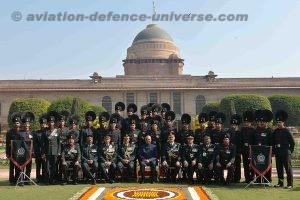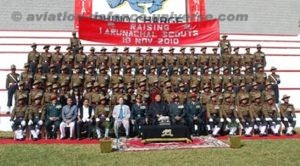The Battle of Longewala was one of the heroic battles fought by the Indian Army during the 1971 Indo Pak war. The Indian border post of Longewala, in the Thar Desert of Rajasthan, became the battle ground between the assaulting Pakistan Army and the Indian armed forces. 120 determined soldiers of the Indian Army stood their ground defending their motherland supported by air action against a formidable 60 Tanks and more than 3000 Pakistani soldiers.
It is described as India’s ‘Battle of Thermopylae’, a reference normally used to describe the conquest of a smaller force army against a much larger and superior force.
The Battle
Indo-Pak war of 1971, also known as the Bangladesh Liberation war, was a consequence of an armed uprising by Bengali nationalists in a bid to gain independence and self-determination for Bangladesh. India was burdened by an influx of six million Bangladeshi refugees who fled owing to the Pakistani army’s atrocities. With no long-term solution insight, the Indian Army captured Eastern Pakistan, in December 1971, which was later declared as Independent Bangladesh.
Situation at Longewala.
Longewala housed a BSF post which was unarmed and a mere single strand wire was strung around its perimeter to keep their camels from wandering off. It was this wire which later played an instrumental role. During the war, 23 Punjab, a company of about 120 soldiers led by Major (later Brigadier) Kuldip Singh Chandpuri was positioned to defend the post.
The Combined Pakistan Arms Plan
Longewala was an important location in the Pakistan game plan. They wanted to capture Indian Territory all the way up to Jaisalmer, and use it as a bargaining chip subsequently. It wasalso in line of their war concept, to put it in the words of Ayub Khan– “The defense of East Pakistan lies in the West “.
Forces
Pakistan put together a division level force with one Infantry Brigade, an Armoured Regiment comprising around of 2000-3000 soldiers and a battery of tanks and ammunition to capture and establish a firm base at Longewala.
The Indian side had just a regiment (23 Punjab Regiment) led by Maj. Kuldip Singh Chandpuri with a recoilless jeep mounted gun , mortar and machine guns to face the onslaught.
The D-Day
On 4th December 2, lt. Dharam Veer Bhan’s platoon detected sounds and observed a large column of armored vehicles moving towards the Longewala post. His report was confirmed through aerial survey and communicated to the company commander Major Kuldip Singh, who immediately swung into action. He was given two choices (a) to stay put and hold the enemy till reinforcements arrive or (b) carry out a tactical retreat. The major decided to defend the post owing to its strategic significance.
The First Pakistan Attack
A surprise attack began at 12:30 am as 45 Pakistani tanks approached the post. They were fired upon by the Indian Jeep mounted 106 M40 recoilless rifles. The advancing Paki troops stalled on sighting the barbed wire symbolizing land mines and brought in forces to sweep and clear the non-exiting mines. Pakistan lost precious time and finally, when the tanks advanced, they got bogged down in the soft sand. Full moon made them sitting ducks for an accurate and direct fire by the Indian artillery. By daybreak the enemy had lost 12 tanks, several vehicles and were nowhere near the outpost.
The Airforce Intervention
At daybreak the Indian Airforce launched a few HAL HF-24 Marut fighters and Hawker Hunter aircraft with rockets and 30-mm cannons to launch attack on the tanks and other armoured vehicles which were now easy targets marks for the IAF’s fighters.
The assault ended by noon of 5th December and Pakistan had 22 tanks destroyed by aircraft fire, 12 by ground anti-tank fire, and some captured after being abandoned. A total of 100 vehicles were also destroyed or damaged around the post. Indian forces managed to thwart the Pakistani plans to capture our territory.
Significance of the Battle
The battle of Longewala was critical in averting an incursion into the western theatre of the 1971 Indo-Pak battle allowing military operations in the east to proceed without any interference. Additionally it denied Pakistan any bargaining chip to be used against India.
The mastermind and hero, Major (later promoted to Brigadier.) Kuldip Singh Chandpuri was decorated with India’s second-highest gallantry award, the MahaVir Chakra and his company earned several awards and felicitations and made their place in the glorious military history.
Longewala was a combined air-ground operation, which could not have achieved such spectacular results without the participation of troops on the ground and the fighters in the air, to defeat an overwhelmingly superior force and win the battle of Longewala.
The battle of Longewala had proved to be fiercest and decisive engagements in the Indian western sector.



























































































































